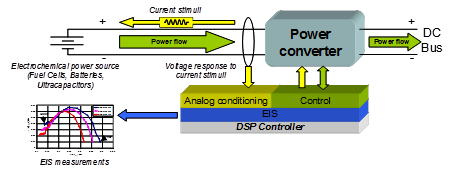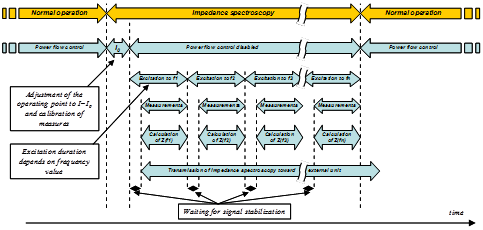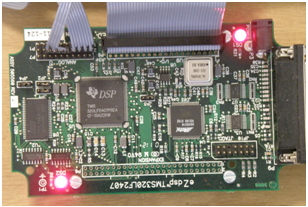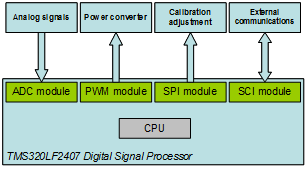Electronic power converter
Référence
04046-01
Statut des brevets
French priority patent application filed on May 16,2011 and entitled “Convertisseur électronique de puissance”




Inventeurs
Daniel DEPERNET
Oumar BA
Alain BERTHON
Statut commercial
Exclusive or non-exclusive license
Laboratoire
FEMTO ST UMR6174
Belfort, France. www.femto-st.fr
Université Cheikh Anta Diop Dakar, Sénégal. https://www.ucad.sn
Description
Context
The development of the use of renewable energy and cleaner vehicles relies heavily on the use of power sources, either to locally store the recovered energy and to supply electricity to a local power grid or to give sufficient energy autonomy of embedded devices such as electric vehicles. In particular, electrochemical sources are the subject of significant interest, whether the batteries of different technologies or fuel cells which have the advantage of make possible the use of hydrogen as fuel. However, these devices have a significant relative initial cost, and their lifetime is currently too short, thus penalizing the overall energy profitability.
The implementation of diagnostic methods based on Electrochemical Impedance Spectroscopy (EIS) is an undeniable improvement of the devices in their final environment. Indeed, the identification of the internal state of the source and degrading operations make possible degradation limitation strategies and thus increasing of power source lifetime, and also relevant decisions to perform the required availability of the system. However, the current methods use costly and bulky hardware and then are neither economically nor technically transposable in situ.
The presented device enables the integration of EIS functionality within the control of the power converter. It is based on measurement strategies, signal processing and control that minimize the cost, volume and mass.
Technical description
The principle of EIS integration is to control the duty cycle of the power converter to create an excitation current in the power source and simultaneously measuring the excitation current and voltage response to derive the impedance of the power source for the excitation frequency under consideration as shown in Figure 1. Using this principle for different frequencies chosen to cover accurately enough the relevant spectrum width will provide the Nyquist diagram of the source impedance. The measurement of a full impedance spectrum must be done by small excitation signals around a fixed operating point in order to be usable. Thus the implementation of the impedance measurement requires first of all keeping the power source at a fixed operating point for the entire duration of the measurement. EIS process is suspended if not possible and completed later. The amplitude of the excitation signals will remain small compared to their nominal magnitude to stay within the linear domain of the impedance model.

Figure 1. Principle of EIS integration into the power converter
The implementation phases of the EIS are presented in Figure 2. The operating point for which the EIS has to be performed is first achieved and the power flow control is disabled to avoid interference with the current excitation of the power source during the EIS process. The impedance measurement is then performed for each frequency of the spectrum to take into account and finally the power flow control is resumed.

Figure 2. EIS algorithm implementation
The amplitude and phase of the excitation current and of the voltage response are then extracted from sampled signals by Discrete Fourier Transform (DFT). This treatment allows in particular a very good accuracy on the phase and amplitude even in case of disturbances in the unfiltered frequency area.
Development stage
A microcontroller as powerful as those widely available commercially was chosen to validate the possibility of implementing the algorithms on low cost devices. The converters are controlled by the DSP controller TMS320LF2407 from Texas Instruments clocked at 30 MHz and shown Figure 3.

Figure 3. DSP board based on TMS320LF2407 which integrates control and EIS algorithms
As shown in Figure 4, the main internal peripherals that are used are the analog to digital converter which performs sampling measurements, PWM generators that perform the control of static converters, the SPI interface which performs control of the electronic calibration, and the SCI (Serial Communication Interface) which performs communications with external interface for data monitoring and storage (typically a computer). Control and EIS algorithms are implemented in this microcontroller.

Figure 4. Hardware functionalities
Benefits
This characterization method enables the monitoring of the internal parameters of power sources in actual operation and without additional hardware, thus at lower cost and lower size. Furthermore, it enables the impedance spectroscopy to be achieved automatically, at reproducible conditions and without external intervention or human help. This measurement strategy presents the advantage to know physicochemical processes of power sources in actual use by exploiting online spectroscopic records for a sufficient operating period. Diagnosis and prognosis strategies can take advantages of these measurements to enhance the availability and the maintenance process. The identification of correlation between these phenomena and the control profiles will then refine the methods of designing, sizing and control of hybrid systems constrained in cost and size in order to improve the lifetime of power sources.
Industrial applications
All batteries in hybrid electric systems (stationary and embedded). Online measurement of battery state of health and state of charge.
Fuel cell systems. Online measurement of Fuel Cell state of health, ancillaries fault detection, abnormal gas flow detection.
For further information, please contact us (Ref 04046-01)